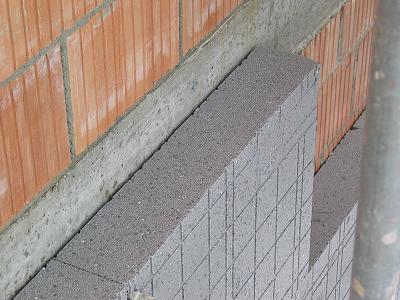BASF
“Neopor” energy-saving foam insulates modern passive houses in Switzerland
A new housing development recently completed by Swiss builder Anliker (CH-6021 Emmenbrücke; www.anliker.ch) at Rothenburg is the first multiple-dwelling project in the alpine country to be built to the eco-efficient German passive-house standard, says BASF (D-67056 Ludwigshafen; www.basf.com), which supplied its “Neopor” (EPS) foam for insulation of the masonry walls. The development has won a special building award from Solar Agentur Schweiz / Agence Solaire Suisse, a Swiss energy conservation foundation (www.solaragency.org).
Along with other “building blocks,” the German chemical group says its material contributed to a 90% reduction in energy consumption compared with conventionally built houses. Sarnafil (CH-6060 Sarnen; www.sarna.com), part of the Sarna Group, is responsible for moulding the black beads of EPS into silver-grey Neopor insulation board, which is then processed by sister company Sarna-Granol (www.sarna-granol.ch), a manufacturer of exterior insulation and finishing systems.
Unlike conventional thermal insulation, the silver-grey material contains infrared absorbers and reflectors that reduce the foam´s thermal conductivity, BASF says. This results in insulation board claimed to be up to 20% thinner than classic expanded polystyrene board. As less material is required, costs and resources can be saved.
One square metre of 10-cm-thick “Neopor” board can save 1,200 litres of heating oil over a 50-year period, says the German group. The 15-cm-thick masonry of the loft houses is clad with a 30-cm layer, while a 24-cm layer is said to be sufficient for the more compact villette buildings. For additional energy saving, all buildings in the development are fitted with PVC windows triple-glazed with thermal glass.
Along with other “building blocks,” the German chemical group says its material contributed to a 90% reduction in energy consumption compared with conventionally built houses. Sarnafil (CH-6060 Sarnen; www.sarna.com), part of the Sarna Group, is responsible for moulding the black beads of EPS into silver-grey Neopor insulation board, which is then processed by sister company Sarna-Granol (www.sarna-granol.ch), a manufacturer of exterior insulation and finishing systems.
Unlike conventional thermal insulation, the silver-grey material contains infrared absorbers and reflectors that reduce the foam´s thermal conductivity, BASF says. This results in insulation board claimed to be up to 20% thinner than classic expanded polystyrene board. As less material is required, costs and resources can be saved.
One square metre of 10-cm-thick “Neopor” board can save 1,200 litres of heating oil over a 50-year period, says the German group. The 15-cm-thick masonry of the loft houses is clad with a 30-cm layer, while a 24-cm layer is said to be sufficient for the more compact villette buildings. For additional energy saving, all buildings in the development are fitted with PVC windows triple-glazed with thermal glass.
 | |
Swiss passive houses with “Neopor” foam wall insulation (Photo: BASF)
 | |
“Neopor” insulation board up to 20% thinner than classic expanded
polystyrene board (Photo: BASF)
16.09.2004 Plasteurope.com [200879]
Published on 16.09.2004
